Welcome to Hank’s January 2025 Astrophotography Blog. This month saw Mars slip behind the Moon. This is called an occultation. The weather forecast in Custer called for poopy skies that night, so I was not hopeful, and didn’t set up my telescope to capture it. But I walked outside and just before Mars went dark, and just after it reappeared, the skies parted just enough to see the Moon and Mars together; so I pulled out my iPhone and snapped these photos. The first image shows Mars before disappearing behind the Moon, and the second shows Mars after it popped back out.
M100, Mirror Galaxy, image has several other galaxies in the image, including edge on NGC 4312 in the lower right corner. Distant galaxies often look like little fuzz balls. Interesting too, are the variations in color of the stars and galaxies. The camera that I use to capture these images, a Mallincam DS10c, uses red, green and blue sensors to record the colors shown here. While I “boost” the color a bit in the images shown, I try to have the colors reflect what is there. M100 is about 55 million light years away. It was discovered in 1761 and was one of the first spiral galaxies discovered. Charles Messier, one of the first discoverers of the galaxy, identified it as a nebula without a star, noting that it was difficult to recognize because its faintness. This image represents 5.75 hours of light, taken in five-minute chunks (or frames). The frames are then stacked one on top of the other to show the final image. The software I used to capture the five-minute frames is called CCD Ciel. The software I used to process the image included Siril, Graxpert, and PhotoShop Elements. The rule of thumb in astrophotography is that the more light that is gathered, the more detailed the image.
NGC 2237, the Rosette Nebula, is a nearby nebula in the constellation Monoceros and is about 5,200 light years away, within our Milky Way galaxy. As you can see, this nebula is really big and doesn’t fit in my field of view.
In the constellation Leo, there are three galaxies that are close together called the Leo Triplet. I took the first photo of M 65 and M 66, as they both would fit into the field view of my telescope. The third galaxy, NGC 3626, didn’t quite fit in, but BHAS member Chris talked me through how to set up my CCD Ciel software to capture the triplets. The process of piecing together patches of the night sky is called a mosaic, and this mosaic was made up of two images. The one galaxy in the left is edge-on, and the other two are partially tilted toward us. The dark lines in the galaxies are called dust lanes.
Last month I warned you that you’d be seeing more of M78 in the coming months. As it turns out, the BHAS members wanted to rotate the image a bit, so this new version shows a little different orientation. This image represents 198 five-minute frames, or 16.5 hours of capture. I like the detail. I am thinking I may change out the optical train in my telescope this month, so I may not be taking any more of M 78 for a while. Stay tuned to see what’s coming next….
Until next time, Clear Skies! -Hank




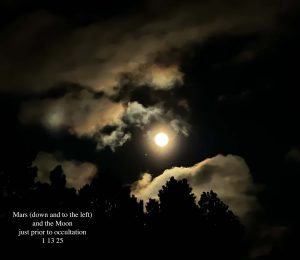
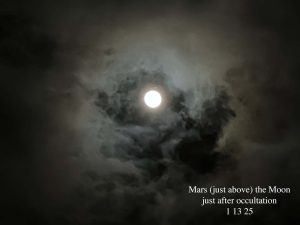
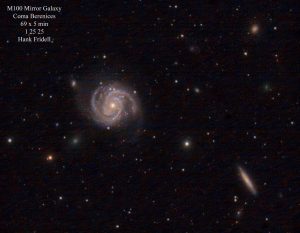
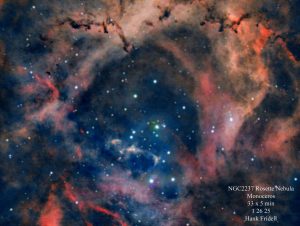
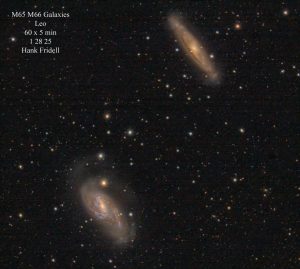

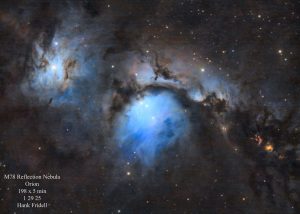
Great work Hank! Kudos!
Thanks, Rick! The night sky is full of awe and inspiration! -Hank